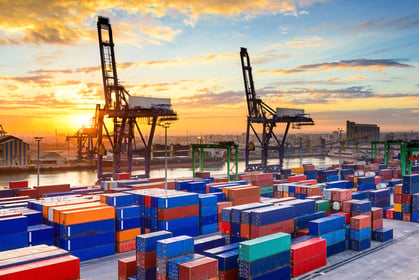5 Key Tactics for Improving Your Demand Forecasts
Brian Hoey - March 26, 2020

The two most basic concepts in business are supply and demand, but as they play out in something as complex as the modern industrial supply chain they’re anything but basic. To wit, about 70% of supply chain businesses have adopted some kind of S&OP (sales and operations planning) workflow in order to more effectively match demand projections and production/operational plans on a quarterly or yearly basis. Though processes like these are a good start, even they aren’t the be-all-end-all. To wit, nearly two thirds of respondents to a recent survey said they wanted to take steps to improve their S&OP processes.
Why this gap between adoption and satisfaction when it comes to creating plans to meet emerging demand? On some level, it’s all about your forecasts. The most robust S&OP blueprint in the world can’t help you if its projections for product demand are way off. This begs the question: how can you improve your demand forecasts in order to power improved planning and execution?
1. Upgrade Your S&OP
First things first: not all S&OP workflows are created equal. Gartner lists 5 different stages of S&OP maturity—with relatively low-tech, spreadsheet-powered planning at the first stage and more sophisticated, data-driven, Industry 4.0-compatible planning processes at the other end. No one is saying that the only way to forecast accurately is to immediately invest a ton of money in shiny new software suites and install IoT (internet of things) devices across your entire value chain. What we are saying is that one of the easiest ways to improve the forecasting element of your S&OP process is to upgrade beyond the spreadsheet. Whatever else your planning process might have going for it, doing your planning in a low-visibility environment (like an Excel file) necessarily limits your potential for collaboration and makes it difficult to incorporate the latest and most accurate data. Once you move to a process that doesn’t have these limitations, your forecasts will be informed by more data and the input of more stakeholders.
2. Improve Data Access
Speaking of data: 63% of planners list data access as a real problem when it comes to producing high quality demand estimates. We alluded to one method of improving access from within the S&OP process (ditching the spreadsheet), but what other steps can you take to improve access to data across every touchpoint on the value chain? For starters, you should try to identify the specific areas where data access is an issue, i.e. where are the data silos within your value chain? From there, you can take steps to address them—this might take different forms:
- Adopting more agile, flexible software for specific functions that can better integrate with overarching ERP or S&OP software suites.
- Changing access control or integration settings within existing planning and tracking software.
- Examining data collection and updating practices across functions like inventory planning, transport routing, production planning, etc. with an eye towards improving the data that gets collected in the first place
- Establishing an SST, or single source of truth—i.e. a designated centralized system that pulls data in from elsewhere on the value chain frequently enough that the information therein can be considered definitive.
Once planners are working not just with more data but higher-quality data, they’ll be able to put together much more accurate value chain predictions.
3. Incorporate Advanced Analytics
Of course, even when S&OP planners have all of the data they could possibly want from every relevant department, it’s hard to break out of the cycle of reactive decision-making. When all you have to go on is past data and past events, it’s natural to make predictions based on the assumption that past trends will continue to hold. Unfortunately, this view puts severe limitations on your ability to see potential changes and disruptions on the horizon. The best way out of this reactive planning cycle? Advanced predictive analytics. By feeding all of that painstakingly collected and highly-visible data that we discussed above into an advanced predictive algorithm, you can get proactive rather than reactive with your future expectations. Whether these analytics flows are powered by machine learning or some other analytics technology, it’s a virtual guarantee that they’ll be able to analyze more data more accurately than a human planner could possibly manage by hand. The result is forecasts that are more accurate than ever—and the price of admission is a simple modicum of supply chain visibility.
4. Track Performance Over Time
Now, it might seem like advanced analytics are basically the final word in improved forecasts—and it’s true that advanced predictive algorithms represent a huge potential value-add in terms of forecast accuracy. But once you’ve got these kinds of flows up and running (or even if you don’t), it’s important to keep tabs on how well your forecasts are actually predicting demand, and how those predictions are translating into operational improvements. To that end, you might track a few specific things:
- Trends in forecasting errors—i.e. whether you’re getting closer to or further away from accurate predictions over time.
- Frequency of stockouts—since these suggest unexpected demand spikes or poorly aligned production plans, they can be a good indicator of S&OP health.
- Buffer stock levels—if you’ve been able to reduce buffer stock without experiencing added disruptions, it’s a good sign that your forecasts are both accurate and well-integrated.
Once you’ve established a historical baseline for these kinds of stats, you can track your progress over time. If your forecasts are improving—great! If not, you can start to troubleshoot your existing processes to see if there’s a way to move the dial.
5. Use Industry 4.0 Technologies
Above, we said that improving your ability to match supply to demand wasn’t just a matter of adopting fancy technology and software solutions. While that’s certainly true, it also doesn’t hurt to look into modern, cutting edge supply chain technology if you’re able to. As we enter the era of Industry 4.0, this might include things like IoT devices on your factory floor, RFID chips in shipping containers, and smart, cloud-based planning modules that help you better leverage that data. If you’re able to achieve a high level of data visibility and real-time integration, you can even augment your S&OP processes with S&OE (sales and operations execution) workflows that make minute adjustments to inventory levels and transport plans to keep longer term plans on track. These workflows have the added bonus of offering a live snapshot of demand levels that can then be leveraged by S&OP planners into better forecasts in the future.
If you want to learn more get your Guide to Sales & Operations Planning
In this Guide you will learn:
-
Why a S&OP Process is important
-
How a S&OP System can be flexible and quickly implemented
-
Central tasks of a S&OP System
-
The key to more productivity
LATEST POSTS
- Understand Why Production Planning Needs Specialized Solutions
- Understand Circular Economy in The Manufacturing Industry
- How Can Industry 4.0 IT Integration Be Achieved Smoothly?
- The Significance of Order Sequencing in Discrete Manufacturing
- How to improve your Supply Chain Management: The Power of Control Towers



